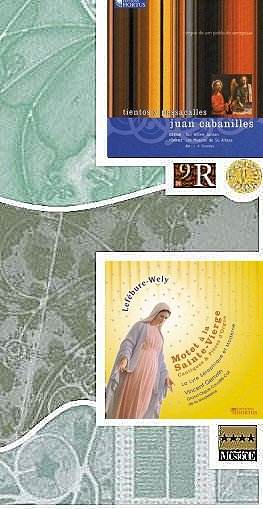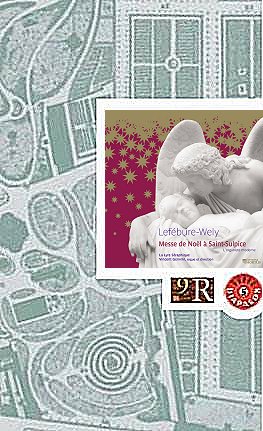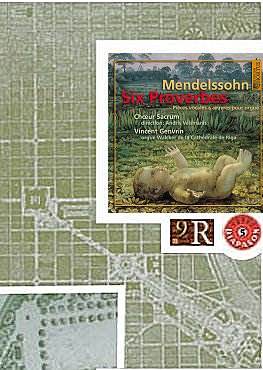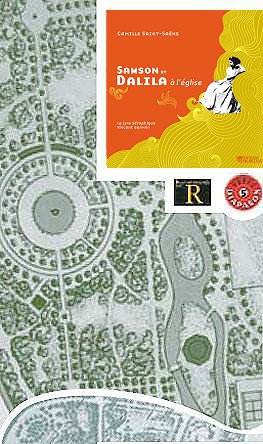



CABANILLES Tientos y passacalles
"Surely the most beautiful recital consecrated to the Master from Valence"
(Diapason).Willem Jansen makes the art of this keyboard master come alive on the historic organ of the Église de San Pablo, Saragossa, Spain, admirably restored by the Swiss organ builder Felsberg. Jansen surrounds himself with young Spanish musicians and introduces us to the unpublished vocal works intended for the processions of the Feast of Corpus Christi.
ref : HORTUS 013 Review [JV] Review [PSh]
LEFEBURE-WELY Motets à la Sainte - Vierge
(Hymns and Pieces for the Organ)La Lyre Séraphique • Vincent Genvrin, musical director and organist at the main Cavaillé-Coll organ in the Église de la Sainte-Madeleine (Paris, France). Ensemble Vocal Pythagore, directed by Géraldine Toutain Catherine Ravenne, contralto • Antoine Espagno, double-bass.
"The performers seemingly have only one goal: to share their pleasure with us! ... A happy and welcome initiative" (Le Monde de la Musique).
Lefébure-Wély, a very popular composer during the reign of Louis-Philippe, composed music representative of a period when the repertoire of the Salle Favart (marches and quadrilles from popular bandstands of the day) was played at the Église de la Sainte-Madeleine as postludes to the Mass.
ref : HORTUS 004
LEFEBURE-WELY Messe de Noël à Saint - Sulpice
L'organiste Moderne (The Moderne Organist)
La Lyre Séraphique • Vincent Genvrin, musical director and organist at the main Cavaillé-Coll organ in the Église de Saint-Sulpice (Paris, France) Ensemble Vocal Intermezzo, directed by Claire Marchard • Sylvie de May, soprano • Catherine Ravenne, contralto • Xavier Bisaro at the Cavaillé-Coll choir organ.
"Reconstructs with realism and verisimilitude the atmosphere of a mass in the Second Empire period ... with panache" (Répertoire).
A reconstruction of two masses, for Christmas Day and Fête Dieu ("God's Feast Day", known as the "Feast of Corpus Christi" , a feast day that has now been renamed "Feast of the Holy Sacrament of the Body and Blood of Christ") which seek to create the liturgical atmosphere of a large Parisian church, Saint-Sulpice, under Napoléon III.
ref : HORTUS 005



MENDELSSOHN Six Proverbes, Préludes & Fugues, Sonates III, IV
Chœur Sacrum, conducted by Andris Veismanis • Vincent Genvrin at the Walcker organ of the Cathedral of Riga (Latvia)."A very special tone, profoundly original" (Diapason).
The Six Proverbes pour l'année liturgique (Sechs Sprüche zum Kirchenjahr) [Six Proverbs for the Liturgical Year] were written for the Cathedral of Berlin between 1843 and 1846. Each of these short eight voice motets, based on King Frederick William IV's favourite Bible verses ("Sprüche"), illustrates a festival of the church year. Im Advent and Weinachten express the solemn joy that announces the coming of the Saviour. Am Neujahrstage, for the New Year, is tinged with a sweet melancholy inspired by the forever lost old year. Three other Proverbs are devoted to the Passion and the Ascension. The monumental organ works find their perfect balance in these vocal works. As was the custom in Leipzig at the time of Bach, the Prelude is placed at the beginning of the Mass and the Fugue at the end as the conclusion of the Mass.
ref : HORTUS 008
INTÉGRALE DES PIÈCES D'ORGUE ET MOTETS DE SAINT-SAËNS (4 VOLUMES)
(Complete Works for Organ and Motets)Saint-Saëns and l'Abbé Liszt
Chœur Sacrum, conducted by Andris Veismanis • Vincent Genvrin at the Walcker organ (Cathédral of Riga), Latvia and the main Cavaillé-Coll organ of the Église de la Sainte-Madeleine (Paris).Samson and Delilah in Church
La Lyre Séraphique • Vincent Genvrin at the Cavaillé-Coll organ of the Église du Gésu (Toulouse).A Wedding, a Funeral and a Hail to the Blessed Sacrament
Chœur de Chambre Les Éléments, conducted by Joël Suhubiette • Vincent Genvrin at the main Cavaillé-Coll organ of the Église de la Sainte-Madeleine (Paris, France) and at the Puget organ in the Église de Notre-Dame-du-Taur (Toulouse).The Patriarch of the Belle-Époque
Vincent Genvrin at the Cavaillé-Coll organ of the Église d'Azkoïtia (Spain).Saint-Saëns' s organ music displays a surprising absence of stylistic unity: many varied styles rub shoulders with each other, from the neo-classic to the postromantic, reflecting the major trends of religious music in the second half of the 19th century. Five masterpieces of the symphonic period serve this multi-form work, placed in its liturgical context thanks to the participation of soloists and vocal ensembles specialised in this repertoire.Requiem and Nos Autem Salve ReginaChœur de Chambre Les Éléments, conducted by Joël Suhubiette • Frédéric Desenclos at the Puget organ of the Église de Notre-Dame-du-Taur (Toulouse, France)."Opulence and serenity ... a first class recording" (Répertoire). "An exceptional recording" (Diapason).The world premiere recording of Alfred Desenclos' Requiem reveals to us a work that falls directly into the line of Fauré and Duruflé in its calming atmosphere, and has been nourished by a sincere faith and a profoun humanism. A master of vocal art, Desenclos knew how to interweave Gregorian melismas and "modern" harmonies into a perfectly balanced synthesis.ref : HORTUS 009


LOUIS MARCHAND œuvres pour Clavier (Keyboard Works)
Laurent Stewart, harpsichord • Freddy Eichelberger, organ.Éditions Hortus made the decision to include the two Suites for harpsichord (1699-1702) and the Premier Livre d'Orgue (First Book for the Organ) (1700) of the same period, even though they are only known to us in a posthumous edition.
The performers Laurent Stewart and Freddy Eichelberger, the first on an extremely rare 17th century French harpsichord, the second on a convincing restoration of an organ of the same epoch, reveal to us a profound unity in the keyboard works of Marchand, the exact opposite of which is found in his contemporary François Couperin's keyboard works. To emphasize this unity, Freddy Eichelberger has transcribed some of the harpsichord works for organ.
ref : HORTUS 021 - 022
KAUFFMANN La Joie des âmes par l'harmonie
(The Joy of souls by harmony)Jesus Martin Moro at the organ of the Église de Saint-Étienne, Baïgorry (France) • Marc Écochard, oboe.
These choral preludes, in which the cantus firmus is played by a solo oboe, are described by Kauffmann himself as "short, but developped with particular invention and a pleasing style". Works by Krebs and Homilius round off the programme. This recording inaugurated the magnificent organ in Baïgorry by the organ builder Rémy Malher.
ref : HORTUS 019
GUILLAUME DE CHASSY
Lunes
(Moons)Ensemble Vocal Les Éléments, conducted by Joël Suhubiette. Jazz Cantata for choir, piano and percussion.
A "Jazz" Cantata which draws on flamenco and Eastern European sources, not forgetting Prokofiev or Debussy. An astonishing musical voyage, halfway between composition and improvisation in which vocal music becomes "orchestral".
ref : HORTUS 023